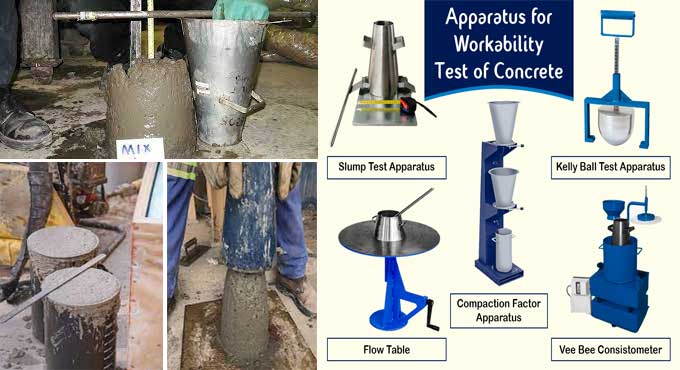
Fresh Concrete properties at the time of Construction
The term fresh concrete refers to concrete that has not yet begun to set and harden. In addition to being able to pour and deform fresh concrete, it can also be transported and pumped for use in moulds and formwork. In other words, it is flexible and can take on any shape.
Define Fresh Concrete
A concrete that is fresh is one that is in its plastic state. Using fresh concrete, you can easily mold a structural member that will last for a long time. In addition to being easy to prepare, it is capable of displaying a wide range of properties from raw materials that are readily available.
Concrete Workability
Workability is influenced by consistency in the flow characteristics of fresh concrete. The slump test measures the amount of fluidity or wetness in a mixing container.
All of the above requirements for transportable fresh concrete are collectively referred to as transportability, compatibility, mobility, stability, mix ability, playability, and finish ability. It is a composite property that determines the workability of fresh concrete. Definitions of workability are difficult to provide that cover all aspects.
Concrete Consistency
Depending on how fluid the concrete is, fresh concrete slumps a certain amount when it is removed from a metal cone. Mixtures that are wet and soft slump more than mixes that are dry and stiff.
An example of a high slump concrete is one that has a lot of fluidity, whereas a low slump concrete has a more rigid and drier consistency. In case of a high slump mix, excessive bleeding, shrinkage, cracking, and dusting may occur.
Depending on the type of work, there is a certain range of consistency. Concrete of medium consistency with a slump of 3 to 6 inches offers the best workability. It is less workable to mix very dry or very wet materials.
Temperature
Putting concrete in a temperature above 40?C without taking proper precautions is not recommended. An important chemical process that contributes to the strength of concrete occurs during this time period. As a result of hydration, if the temperature of concrete does not remain within a safe range during hydration, stresses are generated, and cracks develop.
Concrete and the hydration process both slow down if the temperature falls below the minimum temperature. A concrete will not harden unless it is controlled at a specific temperature.
Segregation
A large amount of vibration in cement can cause segregation. While concrete is in a liquid state, heavier materials tend to settle to the bottom and lighter materials tend to rise, so when concrete is in a liquid state, heavier materials settle to the bottom.
Time Setting
It is called setting when concrete hardens from a fresh state to a hardened state, and the time it takes to complete this process is called Setting Time. Concrete's setting time can be increased or decreased by adding admixtures depending on the cement type.
Hydration
Cement reacts chemically with water when it comes into contact with it. Cement hardens to its full strength only after fully hydrated, so if the mixing water dries out too quickly before the cement has fully hydrated, the curing process will stop.
The rate of hydration increases with the temperature of the air. The process of hydration itself generates heat as well. Construction in cold weather can benefit from this heat of hydration, but construction in hot weather can be harmful.
Fresh Concrete Bleeding
The term "water gain" is sometimes used to describe bleeding in concrete. A special type of separation occurs when some water flows from the concrete to the surface, with the lowest specific gravity. When concrete is placed under sunny conditions, concrete will bleed excessively from thin members, such as roof slabs or road slabs.
Plastic Shrinkage
A concrete that is water free before it sets has a smaller volume because water is removed before setting. Plastic shrinkage refers to this volume reduction. Concrete shrinks until it sets completely, which is referred to as the cure shrinkage. It is possible to remove water from plastic concrete evaporative or by absorbing it into dry surfaces such as soil, old concrete or wooden forms that are very dry.
To get more details, watch the following video tutorial.
Video Source: Civil Tech Constructions


